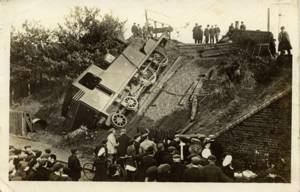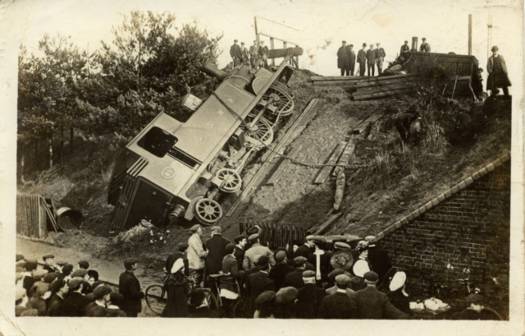
Je cadeautjes zeker op tijd in huis hebben voor de feestdagen? Kom langs in onze winkels en vind het perfecte geschenk!
- Afhalen na 1 uur in een winkel met voorraad
- Gratis thuislevering in België vanaf € 30
- Ruim aanbod met 7 miljoen producten
Je cadeautjes zeker op tijd in huis hebben voor de feestdagen? Kom langs in onze winkels en vind het perfecte geschenk!
- Afhalen na 1 uur in een winkel met voorraad
- Gratis thuislevering in België vanaf € 30
- Ruim aanbod met 7 miljoen producten
Zoeken
Omschrijving
This unique volume is a startling record of memorable and tragic happenings culled from the railway history of three counties in south-east England: Sussex, Surrey and Kent. It is believed to be the first book to describe and illustrate the accidents and unfortunate incidents on a chronological and county-wide basis. The time span is comprehensive, with accounts of the first mishaps dating from Victorian times and the most recent from the twenty-first century. Accounts of wartime incidents have been included. These extraordinary moments in railway history are explored by the author in vivid detail. The focus is not solely on collisions and derailments but extends also to other untoward events, some away from the main line and others on railway premises. The descriptions of the varied and dramatic scenes depicted include details of those caught up in the accidents and interesting particulars relating to the subsequent fate of the locomotives involved.
Specificaties
Betrokkenen
- Auteur(s):
- Uitgeverij:
Inhoud
- Aantal bladzijden:
- 96
- Taal:
- Engels
- Reeks:
Eigenschappen
- Productcode (EAN):
- 9781445681191
- Verschijningsdatum:
- 15/02/2024
- Uitvoering:
- Paperback
- Formaat:
- Trade paperback (VS)
- Afmetingen:
- 165 mm x 234 mm
- Gewicht:
- 305 g

Alleen bij Standaard Boekhandel
+ 44 punten op je klantenkaart van Standaard Boekhandel
Beoordelingen
We publiceren alleen reviews die voldoen aan de voorwaarden voor reviews. Bekijk onze voorwaarden voor reviews.









